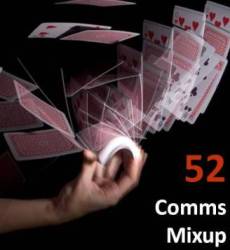Update: Twitter media researcher @TPerzyk got wind of this post and was kind enough to offer some additional insights. Here is a snapshot of the conversation. Sounds like some exciting new developments in the metrics department are coming soon:
According to this VentureBeat story, Twitter co-founder Evan Williams planted the seed earlier this week that Twitter may be looking beyond followers in the near future. And while he didn’t commit to one specific metric, he did say that, “The dream metric is how many people saw your tweet.”
Williams proposition begs the question: What would be the best Twitter metric? Let’s take a look at some of the possibilities.
1. How many people saw your tweet on average? This metric is exciting, yet idealistic. Yes, it would be great to know how many people actually saw a tweet you posted. After all, Twitter is information overload for many and tweets cross our Hootsuite and Tweetdeck apps like camera flashes at a major sporing event. How many people actually saw or read your tweet would provide a much more accurate reach number. And if you can figure out how to calculate that metric, you may be more famous than Evan and the Twitter team in the near future.
2. Exposure to your tweet. This is basically an impressions metric and it’s not unlike other impressions metrics. The pro, marketers will argue, is that it puts Twitter on a level playing field with other channels where impressions have long been the king metric. The con — no way in hell even 10 percent of people potentially exposed to your tweet actually read and or see it.
3. Average engagement per tweet. This is probably my No. 1. If someone engaged with your tweet, we know they actually saw it and read it. Plus they felt it was worth continuing the conversation. If you like baseball, followers is to batting average as engagement per tweet is to on base percentage.
4. Average retweets per post. Another good one here. And maybe easier to measure. A retweet is an endorsement. And you can make a strong argument that the more a person is retweeted, the more influential he or she is to her followers.
5. Lists. When you think about it, maybe Twitter is already tracking one of the best possible measures of influence it can for users — one it doesn’t do a very good job of publicizing. If retweeting someone is endorsing that person’s tweet, then adding someone to a Twitter list is endorsing that person. Seems like this is a more valuable long-term measure of a users credibility and value add. Plus, it eliminates the skewed data we could see from a person who had a popular tweet or two.
6. Categorization. Any of the above metrics that could be categorized based on topic or hashtag would be valuable. For example, it’s valuable for me to know a PR pros average number of engagements per tweet. But what if I could know his/her average number of engagements per tweet on all hashtags that at least contain #PR? Same thing with lists. Overall number of times listed is interesting. Overall number of times listed on a PR list could be more telling. Of course, this gets tougher and would likely need to factor not only lists with the term PR in the title, but lists created by users with PR in their bio, etc.
I’m not saying that any of these are the exact way to go. Or easy to track for that matter. But it’s interesting to think about, isn’t it? Which of the above metrics is best in your mind? What would you add?





Hey Justin - thanks for starting this conversation. I don't want to hijack the comments, so how about a one-liner in response to each point above?
1. Tweet seen: Agree, idealistic, probably impossible to measure reliably, but also might be a false metric, depends on objectives, doesn't describe impact.
2. Exposure/impressions - only valuable if you believe scale is critical, tends to discount the long tail, discounts pockets of influentials, depends on objectives.
3. engagement per tweet - again, scale deceives - if only 2 people engage with your tweet, but they're the people you most want to engage, the numbers will suffer -- maybe a weighted set of metrics leading to a score of some kind would work.
4. Retweets per post - see above - is more always better, does this discount targeted stuff, is it all more about outputs than outcomes?
5. Lists -- I like this one because it implies attention and separates from the broad stream -- now, if only you could send easily only to lists (maybe my ignorance is showing...) -- I haven't tried to do so in a while.
6. Explore this on further, mon ami = maybe the weighted metrics hold promise here. @kdpaine or @metricsman might have some ideas here too...
Cheers!
Sean
@commammo All good thoughts, Sean. Definitely no perfect metric that I know of. And @tperzyk just pointed out that avg engagements per tweet tells a better story if we include impressions as the denominator and factor that in. For example, 100 engagements for someone with 100k followers tells a different story than 100 engagements for someone with 1,000 followers.
Regarding reaching the right people, ideally that is part of the story. Of course, the company has to have done an influencer mapping exercise or ID those people beforehand to be able to tell that part of the story. More evidence that one metric alone never tells the whole story.